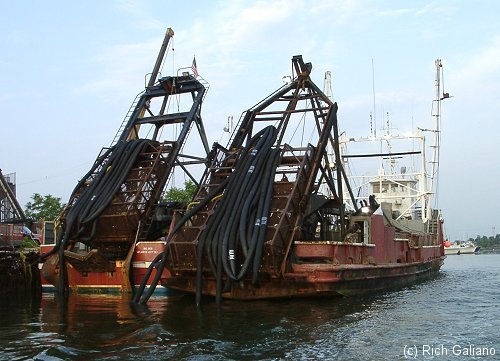

Typical hard clam aquaculture operations will purchase small seed clams from hatcheries which specialize in the spawning and care of young shellfish through the fragile larval phases. Since clams are an infaunal species (living in the sediment), aquaculture operations typically involve placing the clams on the bottom at some point as they grow. To focus on the clam species with the largest level of production, the hard clam uses a strong muscular foot to burrow into sediment and then extends inhalant/exhalant siphons to the sediment-water interface allowing it to filter feed phytoplankton from the passing water. On the West coast, clam aquaculture operations focus on the Manila clam ( Venerupis philippinarum), with 2005 production valued at over $19,000,000 (2005 Census of Aquaculture). The hard clam naturally ranges from the Southern Canada to Florida, where aquaculture production of this species was valued at over $60,000,000 in 2005 (2005 Census of Aquaculture). There are numerous commercially important clam species within the United States, though the one most recognized and utilized in shellfish aquaculture operations on the East coast is the quahog or hard clam ( Mercenaria mercenaria).

Clams, as a general term, can be used to describe any bivalve mollusk species which buries itself in the sediment.


 0 kommentar(er)
0 kommentar(er)
